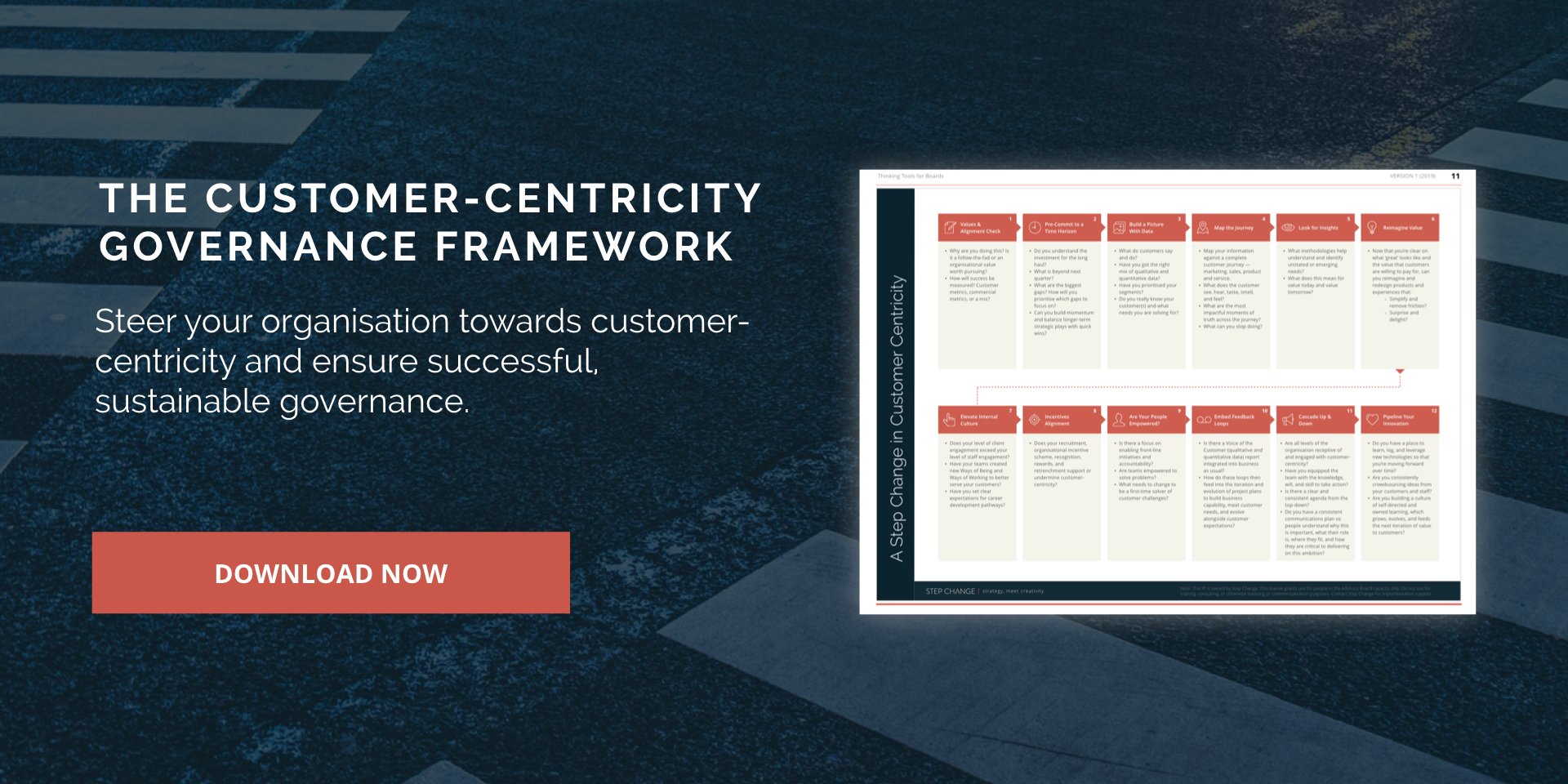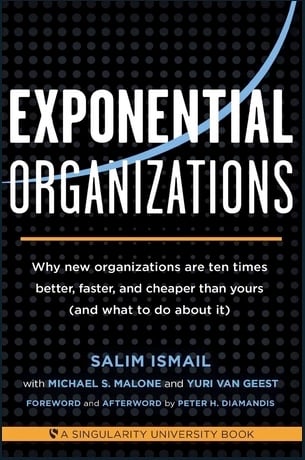Customer-centricity used to be something that the marketing department was responsible for. But in the Age of the Customer, it needs to be at the heart of the business, which then ripples right through every department — from operations to marketing, sales, management, legal, and compliance.
When an approach is organisation-wide, then the overarching body that looks at it needs to have a lens, a view, and a toolkit to govern this transformation effectively.
Insight: The interests of the customers are on the Board agenda more than ever before.
Data: According to Commissioner Hayne (via AICD), “companies are not faced with a binary choice between the interests of shareholders and those of customers. Over time, he argued the interests of different stakeholders will converge.”
What’s the step change: Use a governance framework for customer-centricity to audit, measure, and track progress. Download the Customer-Centricity Governance Framework to get started.
Everyone is talking about customer-centricity, but are they really able to do it in a holistic way across their organisation? More importantly, how does a Board govern and map progress across this transformation?
Working with clients across different industries, we are seeing that, although many are pushing for a ‘customer-first’ thinking, the biggest barrier is in facilitating this thinking across an organisation.
In the wake of the recent Royal Commissions in financial services and aged care, becoming a customer-centric organisation is mandatory rather than just a business advantage, and Boards are called to be directly responsible to make this happen.
The Royal Commission into Aged Care Quality and Safety interim report highlights: “[The aged care system] is designed around transactions, not relationships or care or the new narrative of a meaningful lived experience co-designed by consumers for consumers”.
In response to it, Anchor Excellence calls for “strong and responsive leadership” from the Board and “quality systems that prevent harm, particularly with a focus on high impact risk and that address information needs and flow both up and down the organisation eg Board to Consumer and vice versa”.
There’s no question about it. It needs to be on every Board’s agenda to develop, measure, and govern a customer-centric organisation.
Deloitte also reports that organisations that embrace customer-centricity are 60% more profitable than those that don’t.
But whilst Board members may be well-credentialed and accomplished, they don’t necessarily have the experience in driving and governing the transformation.
So here’s an awkward question: Who on your Board has deep experience in customer-centricity?
Why a Governance Process for Customer-Centricity Is Crucial for Boards
A few people realise that the directors’ role and the purpose of a corporation in Western worlds differ. The United States has famously taken the Friedman doctrine, which focused on and constrained its responsibilities around shareholder interests. However, in Australia’s Corporations Act, there’s a wider group of stakeholders, including customers and employees.
And more recently, still with the Royal Commission into banking, Commissioner Hayne emphasised that acting in the best interests of the corporation demands consideration of more than financial returns to shareholders, and he remarked:
“Companies are not faced with a binary choice between the interest of shareholders and those of customers. Over time, he argued the interests of different stakeholders would converge” (AICD).
For decades, Boards have a good understanding of how their companies are in a social context. But now, more than ever, they are called to step it up and find the nexus between the interests of shareholders in the corporation and that of customers.
Step Change Customer-Centricity Governance Framework
More Boards are taking on the interests of their customers on their agenda, and they require a process to audit, to govern, and to align their organisations.
In this context, we have built a Customer-Centricity Governance Framework to help members of the Board and the executive leadership steer their organisations towards customer-centricity and ensure successful, sustainable governance.
The framework is based on stakeholder interviews we conducted in 2019 with some of the best customer-centric thinkers in the country, our own experience running these transformations in major organisations, and some of the prevailing conversations around it.
It’s a way to find an organisation’s next step-change in customer-centricity, providing leaders with an opportunity to audit their organisation through the lens of their customer and make these seven crucial customer-centric shifts.
 In the coming weeks, we’ll have a deeper dive into the toolkit to explain a little bit more about what each one is.
In the coming weeks, we’ll have a deeper dive into the toolkit to explain a little bit more about what each one is.


















